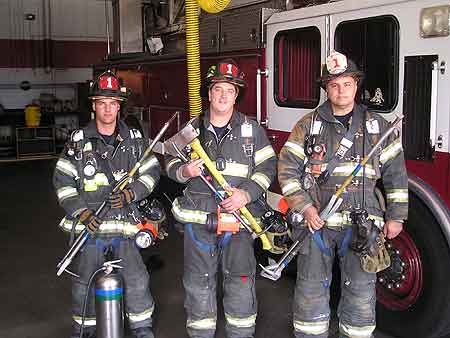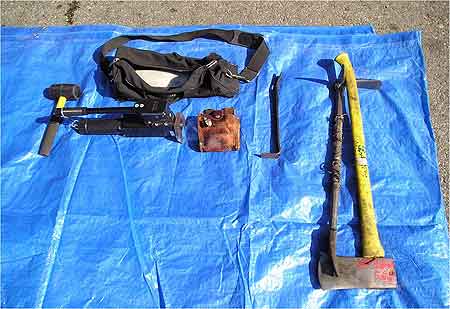By David DeStefano
In the modern fire service, we understand that preplanning is a valuable tool that helps ensure the success of operations by providing information that allows us to plan our response and manage our resources efficiently. Considering how incident priorities will be met before the incident occurs leaves little chance that an important job will be missed during the dynamic environment of an emergency incident.
Fire departments across the nation believe in this concept and reap the benefits of preplanning during incidents each day. However, some still fail to “preplan” or preassign basic job functions at the company level. The same basic rule applies: It’s more efficient to spend time planning the most common scenarios from the comfort of the firehouse before the incident than at a fire scene at 3:00 a.m. with people trapped.
With the diversity of operating arraignments across the country, no one system can be universal. However, there are ways to ensure that basic truck company functions will be addressed and tool assignments appropriate for the response area will be preassigned.
In career departments, knowing the number of members responding to a given alarm and the number of personnel in a company will make preassignment easier. Consider your response area, and cover as many of the basic ladder company functions as possible with your personnel. Be sure to outfit members with the tools they will most likely need for conducting operations.
Your primary concerns first-in will include ventilation, forcible entry, and search and rescue. The way these priorities are carried out may vary by occupancy; however, assigning a basic cadre of tools to the members assigned these function will help standardize positions and make it easier for company officers and members “detailed in” to achieve company objectives.
Although, each response district and fire department may call for slight variations, the basic concept should follow this format:
First-in Truck Company: Investigative mode:
Driver/ Operator: Hook, halligan, and flathead or maul ax
Officer: Thermal imaging camera, halligan tool
Forcible Entry Firefighter: Halligan and flathead or maul ax, hydraulic ram or rescue tool
Ventilation/Floor Above: Hook, halligan, can (pressurized water extinguisher)
These assignments and tools represent the ability to conduct most basic truck company functions at many different occupancies. Perhaps the most important thing to bring along with these assignments is the ability to overcome obstacles by adapting to the environment. The driver/operator and floor-above firefighter will often conduct vertical ventilation together when required. Other times, they may team up to check for victims or extension on the floor above the fire. The company officer may need to assist the forcible entry firefighter in gaining entry when the other members are operating on the roof. For vertical ventilation, the roof team will carry equipment that includes the appropriate saw and hooks for the type of construction. Companies operating with fewer personnel must set realistic performance goals and adjust their equipment to maximize versatility.
The key to the system is that all members know their basic areas of responsibility and standard tool assignments. This allows each member to perform a more detailed size-up from the perspective of his responsibilities and frees the officer from assigning each task while on the fireground.
In volunteer or paid on-call systems, the assignments may require adjustments based on the number of personnel available to respond at any given time. Several assignment options and performance objectives should be established for crew minimums as well as times when more members are on hand. A simple way to keep company capabilities consistent with personnel resources is to post objectives for various crew sizes in the officer’s riding position. If the officer has three firefighters to work with, he is responsible for certain tasks; with a crew of four or five, the responsibilities for the company may grow. Additionally, the officer can call for more resources en route if he feels staffing levels are short of achieving basic truck company objectives. In many volunteer or paid on-call organizations, members may ride different types of apparatus. Posting tool assignments and responsibilities in each riding position will ensure that the basic equipment and functions of the truck company are covered by the member occupying that riding position.
No matter how your department is organized, an efficient division of work on the fireground is essential to success. One of the best ways to ensure that no function is overlooked and that the proper tools are always on hand is to predetermine your requirements and capabilities and preassign as much as possible to relieve some of the burdens of the company officer and the incident commander.

(1) Three ladder company firefighters with basic equipment for investigative mode.

(2) Forcible entry firefighter‘s tool assignment.This equipment may be altered to meet the needs of the company‘s response area. The tool assignment should consist of the equipment most often used to achieve your objective.
David DeStefano is a 22-year veteran of the North Providence (RI) Fire Department, where he serves as a lieutenant in Ladder Co. 1. He previously served as a lieutenant in Engine 3 and was a firefighter in Ladder 1. He teaches a variety of topics for the Rhode Island Fire Academy. He can be reached at dmd2334@cox.net.
MORE ON THE LINE
- Maintaining a Sharp Edge: Ladder Company
- Maintaining a Sharp Edge: Engine Company
- Recognizing the Suburban/Urban Interface
- Carrying a “Bag of Tricks”

